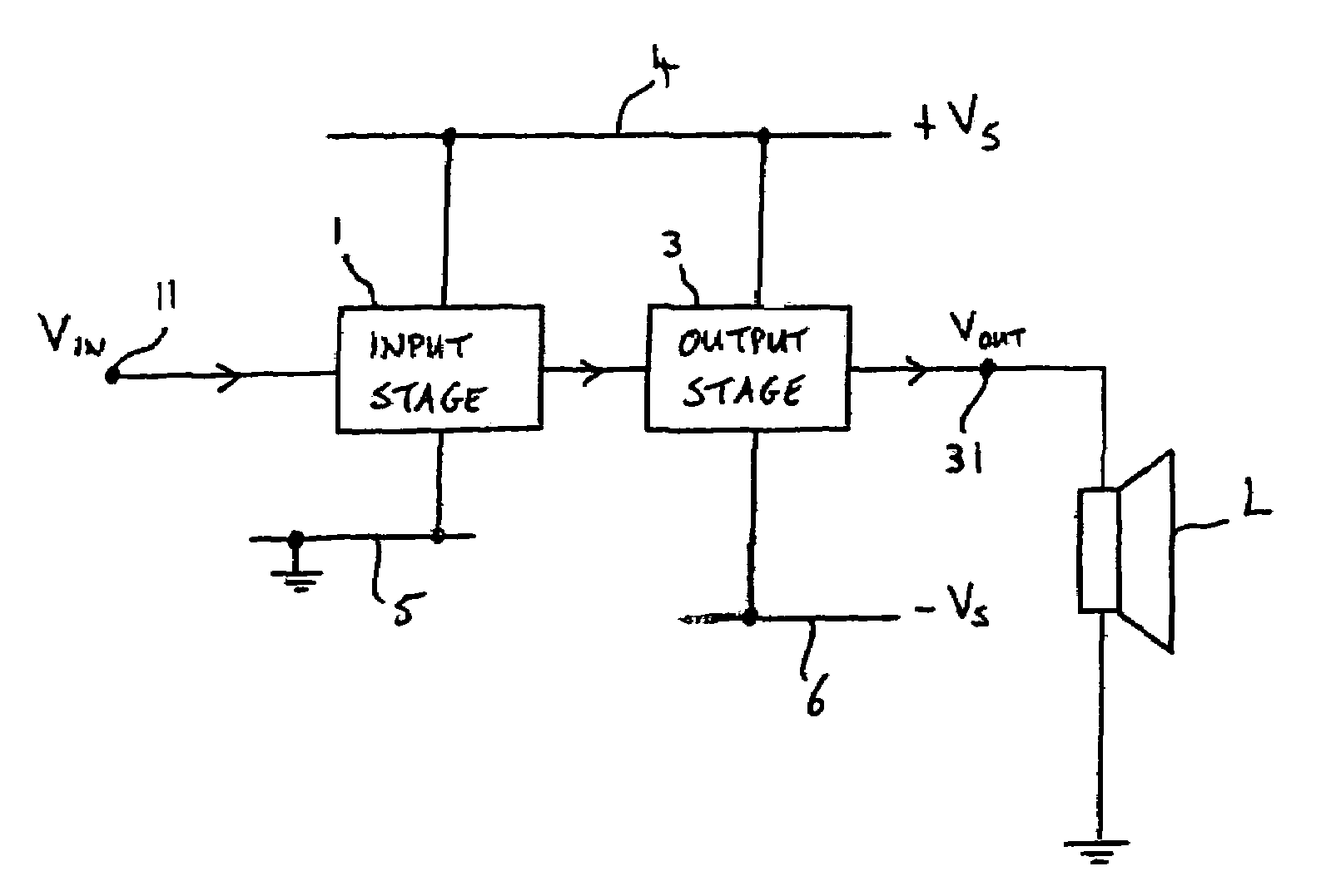Amplifier
a technology of amplifiers and amplifiers, applied in the field of amplifiers, can solve the problems of increasing the complexity, and hence the cost of the amplifier system, and the incorporation of voltage-to-voltage converters, and reducing the effect of nois
- Summary
- Abstract
- Description
- Claims
- Application Information
AI Technical Summary
Benefits of technology
Problems solved by technology
Method used
Image
Examples
Embodiment Construction
[0051]Referring now to FIG. 1, this shows, in highly schematic form, an amplifier embodying the invention. The amplifier is a two-stage amplifier, having an input stage 1 connected to an output stage 3. The input stage 1 has an input terminal 11 arranged to receive an input signal Vin for amplification. The amplified signal from the input stage is provided to the output stage which in turn generates a corresponding output signal Vout at its output terminal 31. The input stage is a single supply stage, i.e. its power supply connections are between a positive supply rail 4 (to which, in use, a positive supply potential is applied) and a ground rail 5. In contrast, the output stage receives a dual supply—it is connected between the positive supply rail 4 and a negative supply rail 6. In this example, in use the potentials applied to the positive and negative rails are equal in magnitude but opposite in sign (+Vs and −Vs respectively). By operating from this dual polarity supply, the ou...
PUM
 Login to View More
Login to View More Abstract
Description
Claims
Application Information
 Login to View More
Login to View More - R&D
- Intellectual Property
- Life Sciences
- Materials
- Tech Scout
- Unparalleled Data Quality
- Higher Quality Content
- 60% Fewer Hallucinations
Browse by: Latest US Patents, China's latest patents, Technical Efficacy Thesaurus, Application Domain, Technology Topic, Popular Technical Reports.
© 2025 PatSnap. All rights reserved.Legal|Privacy policy|Modern Slavery Act Transparency Statement|Sitemap|About US| Contact US: help@patsnap.com



